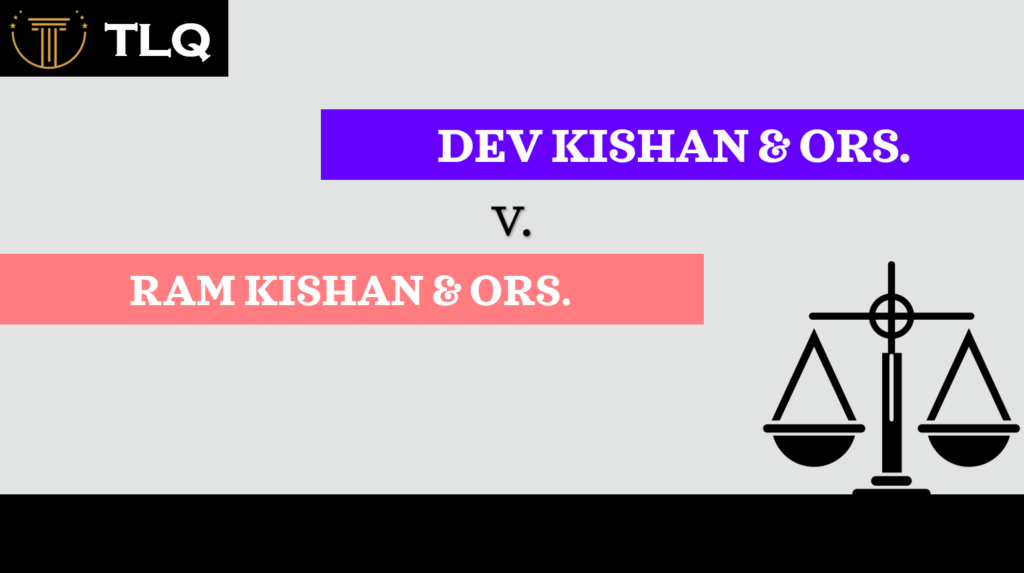Published on 1st February 2025
Authored By: Prabuddha Kale
DES's Shree Navalmal Firodia Law College Pune
Abstract
Discrimination in Indian workplaces is multifaceted discussing mainly rooted in social disparities and cultures in is societies. In this paper, an effort is made to discuss what it refers to, the styles of its presentation, and its effects to people and companies. Despite the strong jurisprudence practised under Articles 14,15 & 16 of the Constitution and various statutes like Equal Remuneration Act, POSH Act and Rights of Persons with Disabilities Act discriminations are there in various forms based on gender, caste, religious, age and disability.
It goes further in trying to explain factors often encountered in combating workplace discrimination including lack of awareness of legal protection, enforcement gaps, and social culture. This is because the areas of focus or concern have been found to include disparities in wages between male and female employees, lame excuses for non-promotion, and outright exclusion of the minority from any chance at equality. Among the recommendations made by the paper, recommendations for the employers include; establishment of diversity policies, putting in place grievance redressal mechanism, and employer sensitization programs. The most notable recommendation is a call for increased legal protection, upscaling of awareness and campaigning and utilization of technological tools in monitoring and reporting.
Introduction
Discrimination at workplace is a cross-sectional phenomenon, which adversely impacts the rights and identity of individuals at workplace. Gender diversity management has been a key issue in India, a country of diverse culture and hence different issues of inequality and discrimination in workplaces. Indian law, as supported by constitutional provisions and statutory laws, has the goal of eradicating discrimination at the workplace and protect employee’s rights. Addressing the aspects of Working Women Justice Act and other format of discrimination in workplaces of Indian business community, employees protected and violated rights and difficulties and prospects of fair workplace environment. If India uphold constitutional norms and seek cooperation of all players it can strive for workplaces where bias and insult are not the rule but the exception. But only by investing the time at this and similar events the vision of completely egalitarian and consequently reasonable workplaces can be achieved[1]
What is workplace discrimination
Discrimination at workplace is a situation where a particular person or employees are being treated by their employer in an unfair manner or manner that is equal to the person or employee in the organization and it can be attributed to the race, caste, religion, gender or age, disability, marital status, sexual orientation or his socio-economic status. This may present itself as equal pay or systemic demotion, receiving harassment, limited opportunity for training or being passed over for a promotion, or unfair hiring. In some instances discrimination can manifest itself in curtain employee being sidelined to a certain project, being given poor rating or even fired from the organizational due to their identity rather than their performance or abilities.
Workplace discrimination in India, in most cases, has connections with other societal discrimination that is common in the country and results from preset and systematic prejudices. These injustices stem from crystallized beliefs in divisions of social status, cultural perceptions that have shaped the world for several centuries and prejudice. For example, caste which is still a sensitive issue in many states creates segregation in organisations and employees from lower castes get few chances to advance. Likewise, studies show that women and the transgender person face gender discrimination such as the wage disparity and promotions’ limitations.
The following challenges are faced by the Indian legal framework but are trying to protect the constitutional rights and statutory laws against discrimination. But even with these interventions, it is still rife particularly for the following reasons; Ignorance, Poor compliance mechanisms and corporate culture. Effective protection against discrimination at the workplace means both the properly constructed and enforced legal framework and people’s actions and activities aimed at societal change to break the cycle of discriminations and build an employers’ environment that honors the human worth and differences.
Legal Frameworks Which Address Workplace Discrimination
- [2]Constitutional Provisions
Article 14: Provisions equal protection under the law and equal protection of the laws within the territory of India.
Article 15: Bar prohibitions against practicing religion, race, caste, pestal sex, or place of birth.
Article 16: Preserves the equal right in public service employment and operates to eliminate discrimination in government occupations. - The Equal Remuneration Act or Employment of Certain Persons Act, 1976
It has been foothold for women to be paid the same as what man gets for doing a comparable job or in any organization that has been established, women should earn the same as men. It also bars discrimination on the basis of gender in regard to both recruitment and employment terms. - The Sexual Harassment Of Wo men At Workplace (Prevention, Prohibition And Redressal) Act, 2013
Otherwise called the POSH Act, this law deals with sexual harassment in the workplace through a complaint, investigation, and remedy process. - The Rights of Persons with Disabilities Act, 2016[3]
Section 101 of this Act bars discrimination of employment of people with disabilities and requires that every employer provide reasonable accommodation to such an employee. - SC and ST (Prevention of Atrocities) Act, 1989
However, while primarily meant for righting societal discrimination, this particular Act has employment implication since it safeguards employees who face caste discriminations and atrocities at workplace. - The Transgender Persons (Protection of Rights) Act, of 2019
This law also works against discrimination of the transgender people in workplace and employment and grants them right to equal opportunity.
Types of Discrimination that happen at Workplace
- Gender Discrimination
Unequal pay for equal work.
They are not in highly rated leadership position.
Discrimination, quid pro quo, sexual assault and abuse, harassment and hostile work environments. - Caste-Based Discrimination
Prejudices against persons from lower castes.
Exclusion of potential employment on grounds of caste. - Religious Discrimination
Discrimination against employees with regard to their religion or practice. - Suffering Discrimination in job Employment on The Ground that They are Persons with a Disability
Lack of access to the structures of workplace.
Negative assumptions that one may have about career advancement - Age Discrimination
Hiring and promotion practices favor the younger employee. - Discrimination based on, sexual orientation, and Gender Identity
Discrimination and prejudice against people of the LGBTQ+ community.
How Employers Can Stop Discrimination[4]
It is therefore the responsibility of employers to ensure compliance to the anti-discrimination employment policies. Key measures include:
- Implementing Diversity and Inclusion Policies: The provided recommendations are as follows: The employers should support and encourage diversity in the workforce as well as the diversity of the organisational culture.
- Establishing Grievance Redressal Mechanisms: An adequate internal complaint committee can handle most complainants from the employees adequately.
- Conducting Training and Sensitization Programs: Seminars with knowledge on workplace ethical practises, diversity, and anti-discrimination help in increasing awareness.
- Ensuring Equal Opportunities: Bias can be reduced by non-discriminatory employment practises, promotion measures and performance evaluations.
- Providing Reasonable Accommodation: To clients and employees with disabilities, employers ought to provide accessibility and what the employee needs.
Next Plan
- Enhancing Awareness
An effective way of realising such goals is through public campaigns and organisational sensitization programmes which inform the employees on their rights as well as the issue of diversity. - Enhancing of the Legal Tools for the Implementation of the Norms
It is recommended that specialised agencies for workplace compliance monitoring should be set because it offers enforcement of the anti-discrimination laws. - Corporate social responsibility (CSR) refers to management’s responsibility to take greater care of people, the environment and other stakeholders outside of investors.
Anti-discrimination policies should therefore be incorporated in CSRS in order to bring about a change on the society. - Leveraging Technology
Whistleblowing systems and big data can be used to detect instances of discrimination in workplace and work to eliminate the sources of discrimination.
Challenges
- Lack of Awareness: Several employees including those in the low-paying informal working segments lack understanding of their rights and to whom they can complain.
- Mobility, Ethnicity, Gender, and Age.: Prejudice and prejudice at the organisational culture level contribute to discrimination at workplaces.
- Weak Enforcement Mechanisms: However, as it will be observed, there are laws in most societies; but the quality of implementation and monitoring mechanisms put in place is usually wanting.
- Limited Scope of Laws: While passing such laws such as POSH Act, the law has only been applied and formulated with a focus on Gender, hence lacks some aspect of covering all forms of discrimination than Gender discrimination.
Landmark Judgement
Vishakha and Ors vs. State Of Rajasthan (1997)
Date
13 August 1997
Bench
Chief Justice J. S. Verma
Justice Sujata V. Manohar
Justice B.N. Kirpal
Matter
The Supreme Court ruled[5] that all personnel of the workplaces should abide by the specified requirements so as to protect the rights of women employees against sexual harassment. These were as if mandatory legal provisions to be implemented just like any other law under Article 141 of the Constitution though expected to have statutes under them once passed. They are the precedent in addressing sexual harassment in the context of Indian law, which have paved firstly and paved the way for the subsequent progression in this legal area.
Conclusion
Lack of socioeconomic equity in the workplace is not a matter of an isolated section of the community and individual institutions but a manifestation of wider prejudice and inequalities of the society. Such disparities are usually as a result of previous injustices in the society, cultural prejudice and dwellers’ discrimination that has stayed over the years. Challenging and combating, therefore, workplace discrimination is not an easy task that, may follow the implementation of the laws only but a complex process that covers legal and non-legal measures such as awareness and education together with practical collective actions.
India Has indeed come a long way and made significant overall progress, which consists of the Equal Remuneration Act, The POSH Act and Rights of Persons with disabilities Act but it is still a long journey to say that it has ensured equality for women at workplace. There are the following difficulties, for example, employees’ and their employers’ ignorance of their rights, the lack of strict compliance with existing legislation, and the lack of sufficient control. Furthermore, sectors of informal employment and low organisation, which make up a considerable part of employment in India, do not benefit from most of these legal safeguards.
It is now up to employer to close this gap through promotion of equality, diversity and Inclusions. This includes issues like equal opportunity faced in the recruitment of the employees, fair remuneration for the employees among others measures like affordable health care services to the workers, safe/fraternity means through which the workers can report his/her colleague or employer for creating an unpleasant working condition. Measures that lie on this front include routine sensitisation, diversity training and development of proper internal committees in organisations.
References
- Discrimination in the Workplace <https://legaldictionary.net/discrimination-in-the-workplace/.>
- Constitutional Provisions <https://www.clearias.com/constitution-of-india/.>
- The Equal Remuneration Act or Employment of Certain Persons Act, 1976 <https://www.freelaw.in/legalarticles/Equal-Remuneration-Act-1976#:~:text=The%20Equal%20Remuneration%20Act%2C%201976%20is%20an%20important,and%20women%20for%20the%20same%20or%20similar%20work.>
- The Rights of Persons with Disabilities Act, 2016 <https://www.legalserviceindia.com/legal/legal/article-17902-rights-of-persons-with-disabilities-act-2016-a-comprehensive-analysis.html.>
- SC and ST (Prevention of Atrocities) Act, 1989 <https://tribal.nic.in/actrules/scstpoaact1989.pdf.>
[1] https://legaldictionary.net/discrimination-in-the-workplace/.
- https://www.clearias.com/constitution-of-india/.
- https://www.freelaw.in/legalarticles/Equal-Remuneration-Act-1976#:~:text=The%20Equal%20Remuneration%20Act%2C%201976%20is%20an%20important,and%20women%20for%20the%20same%20or%20similar%20work.
[3] https://www.legalserviceindia.com/legal/legal/article-17902-rights-of-persons-with-disabilities-act-2016-a-comprehensive-analysis.html.
https://tribal.nic.in/actrules/scstpoaact1989.pdf.
[4]https://www.bing.com/searchq=How+Employers+Can+Stop+Discrimination&cvid=4371ce4c46834ec1b1273741a49c9e6d&gs_lcrp=EgRlZGdlKgYIABBFGDkyBggAEEUYOTIGCAEQABhAMgYIAhAAGEAyBggDEAAYQDIGCAQQABhAMgYIBRAAGEAyBggGEAAYQDIGCAcQABhAMgYICBAAGEDSAQgxMDI5ajBqOagCCLACAQ&FORM=ANAB01&PC=HCTS.
[5]https://www.bing.com/search?q=Vishakha+and+Ors+vs.+State+Of+Rajasthan (1997)&cvid=4a3e02cac4a346659ad70efc0cde4e13&gs_lcrp=EgRlZGdlKgYIABBFGDkyBggAEEUYOdIBCDE0MDVqMGo5qAIIsAIB&FORM=ANAB01&PC=HCTS.



